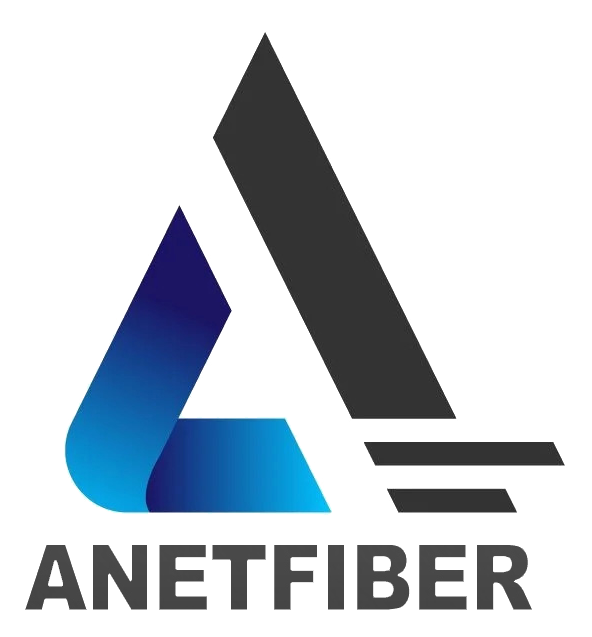The Fundamentals of Optical Fiber Technology Explained

Exploring the World of Optical Fiber Technology
In today's interconnected world, optical fiber technology plays a pivotal role in enabling high-speed data transmission and communication. But what exactly is optical fiber? Let's delve into the fundamental components that make up this revolutionary technology.
What is Optical Fiber?
At its core, an optical fiber consists of three primary elements: the core, cladding, and coating. The core serves as the pathway for light to travel through, typically made of doped glass or plastic. Surrounding the core is the cladding, which has a lower refractive index than the core, allowing for total internal reflection to occur. Lastly, the outermost layer is the protective coating, which shields the fiber from environmental factors and physical damage.
The Role of Technology in Fiber Optics
The advancements in technology have propelled fiber optics beyond traditional telecommunications applications. Today, it finds extensive use in various fields, including medical devices and procedures. In telecommunications, optical fibers form the backbone of high-speed internet connections and long-distance communication networks. Furthermore, in medicine, fiber optic technology enables minimally invasive procedures such as endoscopy and laser surgery.
By understanding these foundational aspects of optical fiber technology, we can appreciate its widespread impact on modern society and its potential for further innovation.
Understanding Fiber Optic Transmission Principles
As we venture deeper into the realm of fiber optic technology, it's essential to grasp the underlying principles governing the transmission of light through optical fibers. This section will shed light on how light travels in fiber optics and the scientific mechanisms behind transmitting information via this groundbreaking technology.
How Light Travels in Fiber Optics
The magic of total internal reflection serves as the cornerstone of how light traverses through fiber optics. When light encounters the interface between the core and cladding of an optical fiber, it undergoes a phenomenon known as total internal reflection. This occurrence occurs due to the stark contrast in refractive indices between the core and cladding, causing the light to reflect back into the core instead of escaping through the cladding. As a result, the light can effectively propagate through the fiber over long distances with minimal loss, enabling efficient data transmission.
Furthermore, understanding this fundamental principle is crucial for optimizing signal integrity and minimizing signal degradation in fiber optic communication systems.
Fiber Optic Transmission Principles
Delving deeper, let's unravel the intricate science behind sending information through fiber optic cables. The process begins with inputting data in the form of modulated light signals into one end of an optical fiber. These signals travel through the fiber by continuously undergoing total internal reflection until they reach their destination at the other end. At this point, photodetectors convert these light signals back into their original electrical form, retrieving the transmitted information accurately.
This seamless process underscores the remarkable efficiency and reliability of fiber optic transmission, making it a preferred choice for high-speed data transfer across vast distances.
In essence, comprehending these transmission principles illuminates how fiber optics revolutionize modern communication systems and pave the way for advanced technological applications across diverse industries.
The Art of Optical Fiber Manufacturing Processes
As we peer into the intricate world of optical fiber manufacturing processes, we uncover the fascinating journey from raw materials to the creation of high-performance optical fibers. This section will unravel the meticulous steps involved in transforming sand and other essential components into the backbone of modern communication and data transmission.
From Sand to Fiber: The Making of Optical Fiber
The process of crafting optical fibers involves a series of meticulously orchestrated steps, each contributing to the precision and quality of the final product. Here's an overview of the key stages in creating these vital components:
Preform Creation: The journey commences with the production of a preform, a solid glass rod that serves as the precursor to the optical fiber. This preform is crafted through a method known as modified chemical vapor deposition (MCVD), where gaseous reactants are introduced into a hollow silica tube and thermally decomposed to form soot on its inner surface.
Fiber Drawing: Once the preform is ready, it undergoes a transformative process called fiber drawing. In this stage, the preform is heated until it softens, allowing for a thin strand of glass – the optical fiber – to be drawn out with remarkable precision. This delicate procedure ensures that the resulting fiber possesses exceptional uniformity and structural integrity.
Coating Application: Following the drawing process, a protective coating is applied to shield the delicate glass fiber from external influences such as moisture and physical stress. This coating not only safeguards the fiber but also facilitates its handling during installation and maintenance.
Testing and Quality Assurance: Rigorous testing procedures are integral to ensuring that each optical fiber meets stringent performance standards. Various parameters such as attenuation, dispersion, and tensile strength are meticulously evaluated to guarantee optimal functionality.
Fiber Optic Splicing Techniques
In addition to understanding how optical fibers are created, it's crucial to explore fiber optic splicing techniques, which play a pivotal role in extending and maintaining communication networks with seamless connectivity.
Joining Fibers Together
Fiber optic splicing involves fusing or mechanically aligning two optical fibers together to create a continuous pathway for light transmission without any interruption or loss. There are two primary methods employed for this purpose:
Fusion Splicing: This technique involves precisely aligning two fiber ends before applying localized heat to fuse them together seamlessly. The resulting joint exhibits minimal signal loss and exceptional mechanical strength, making it ideal for long-haul communication links.
Mechanical Splicing: In contrast, mechanical splicing utilizes specialized connectors or fixtures to align and secure two fibers without fusion. While this method may introduce slightly higher signal loss compared to fusion splicing, it offers greater flexibility during installation and maintenance activities.
By mastering these intricate manufacturing processes and splicing techniques, we gain insight into how optical fibers serve as lifelines for our interconnected world.
Innovations in Fiber Optic Sensing Technology
In the realm of modern technology, fiber optic sensing technology stands at the forefront of innovation, offering a myriad of applications across diverse industries. This section will delve into the profound impact and versatility of fiber optic sensing, as well as the methods employed to amplify signal strength for enhanced performance.
The Power of Fiber Optic Sensing
The advent of fiber optic sensing technology has ushered in a new era of precision and efficiency in various industrial sectors. By harnessing the inherent properties of optical fibers to detect and measure changes in physical parameters, such as temperature, pressure, and strain, this cutting-edge technology has found widespread adoption in critical applications.
Applications in Various Industries
The applications of fiber optic sensing technology span across an array of industries, each benefiting from its unparalleled capabilities:
Oil and Gas: In the oil and gas sector, fiber optic sensors are deployed to monitor well integrity, detect pipeline leaks, and assess reservoir performance with exceptional accuracy. This proactive approach enhances operational safety and facilitates early intervention in potential environmental hazards.
Infrastructure Monitoring: Civil engineering projects leverage fiber optic sensors to monitor structural health, track deformation in bridges and tunnels, and assess the stability of dams and buildings. This real-time monitoring capability enables timely maintenance interventions and ensures the longevity of critical infrastructure.
Aerospace: The aerospace industry relies on fiber optic sensing for structural health monitoring of aircraft components, including wings, fuselage, and landing gear. These sensors provide continuous feedback on mechanical stress levels and vibration patterns, contributing to enhanced aircraft safety and performance.
Biomedical Engineering: In biomedical research and healthcare settings, fiber optic sensors play a pivotal role in non-invasive physiological monitoring. From measuring vital signs to detecting subtle changes in tissue characteristics during medical procedures, these sensors offer invaluable insights for diagnostic purposes.
Environmental Monitoring: Fiber optic sensing technology is instrumental in environmental monitoring initiatives by facilitating precise measurements of temperature variations in oceans, soil moisture levels in agricultural fields, and seismic activities near fault lines. These insights contribute to informed decision-making for sustainable resource management.
Industrial Automation: Across manufacturing facilities and industrial plants, fiber optic sensors enable real-time monitoring of equipment performance, detection of material defects during production processes, and measurement of fluid flow rates with exceptional precision.
By integrating seamlessly into these diverse domains, fiber optic sensing technology underscores its adaptability and transformative potential across critical sectors.
Fiber Optic Amplification Methods
To further augment the capabilities of optical communication systems utilizing fiber optics, various amplification methods have been developed to enhance signal strength over extended transmission distances.
Boosting Signal Strength
One prominent method for bolstering signal strength is through the implementation of erbium-doped fiber amplifiers (EDFAs). These specialized devices operate by introducing erbium ions into the core region of optical fibers to facilitate signal amplification through stimulated emission processes. As light signals propagate through the doped fiber medium, they undergo amplification without requiring conversion into electrical signals—an efficient process that minimizes latency while preserving data integrity.
Additionally,** Raman amplification** serves as another notable technique for enhancing signal strength within optical fibers. By leveraging the Raman scattering phenomenon induced by interactions between light waves and molecular vibrations within the fiber material itself,** Raman amplifiers** effectively boost signal power levels across specific wavelength ranges without necessitating additional external power sources or complex infrastructure modifications.
Furthermore,** semiconductor optical amplifiers (SOAs)** offer a versatile means for signal amplification within optical communication networks by exploiting semiconductor materials' unique gain properties to amplify light signals directly within waveguides or optical fibers themselves.
These innovative approaches collectively contribute to overcoming attenuation challenges associated with long-distance data transmission via optical fibers while ensuring robust signal fidelity throughout extensive network deployments.
The Future of Optical Fiber Technology
As the demand for high-speed data transmission continues to surge, the future of optical fiber technology holds immense promise, driven by innovative solutions to address critical challenges and enhance performance. This section will delve into pivotal advancements in fiber optic dispersion management, the transformative potential of fiber optic wavelength division multiplexing (WDM), and the diverse landscape of fiber optic connector types that underpin global connectivity.
Fiber Optic Dispersion Management
Solving the Challenge of Signal Spread
In the realm of optical communications, managing fiber optic dispersion stands as a paramount concern to mitigate signal degradation over extended transmission distances. Optical fiber inherently exhibits dispersion, leading to signal spreading and distortion. However, cutting-edge dispersion management techniques have emerged to counter these effects and uphold signal integrity.
Innovative approaches such as dispersion-shifted fibers (DSFs) and dispersion compensation modules (DCMs) have proven instrumental in minimizing signal spread by leveraging specialized fiber designs and passive optical components. Additionally, advanced signal processing algorithms and adaptive modulation schemes are being integrated into optical communication systems to dynamically compensate for dispersion effects in real-time, ensuring robust data transmission capabilities across diverse network architectures.
The strategic implementation of these dispersion management strategies not only enhances signal fidelity but also paves the way for extending the reach of high-capacity optical networks with minimal performance trade-offs.
Fiber Optic Wavelength Division Multiplexing (WDM)
Increasing Data Transmission Capacity
In an era characterized by escalating data demands, fiber optic wavelength division multiplexing (WDM) emerges as a game-changing innovation poised to revolutionize data transmission capacities within optical networks. By exploiting the unique properties of light wavelengths, WDM enables multiple signals to be simultaneously transmitted across a single optical fiber—a feat that significantly amplifies network throughput while conserving valuable infrastructure resources.
Through the meticulous allocation of distinct wavelengths to individual data streams, WDM empowers optical networks to accommodate an unprecedented volume of information with unparalleled efficiency. This breakthrough technology not only elevates bandwidth capabilities but also fosters seamless scalability for accommodating evolving data requirements without necessitating extensive physical expansions or overhauls.
The widespread adoption of WDM heralds a new era of ultra-fast and expansive optical communication infrastructures that can seamlessly support burgeoning data-intensive applications across telecommunications, cloud computing, video streaming, and beyond.
Fiber Optic Connector Types
Connecting the World
At the heart of global connectivity lie diverse fiber optic connector types that serve as vital conduits for establishing seamless interconnections within intricate optical networks. These connectors play a pivotal role in facilitating swift deployment, maintenance, and expansion of optical communication infrastructures while ensuring optimal signal continuity and reliability.
From industry-standard connectors such as SC (Subscriber Connector) and LC (Lucent Connector) to advanced variants like MTP/MPO (Multiple-Fiber Push-On/Pull-Off), each connector type boasts unique attributes tailored to specific application scenarios. Whether it's enabling rapid inter-facility linkages or supporting high-density connections within data centers, these connectors embody versatility and precision engineering essential for sustaining global connectivity demands.
Moreover, emerging connector innovations encompass enhanced features such as tool-less installation mechanisms, ruggedized designs for harsh environments, and polarization-maintaining capabilities—further underscoring their adaptability across diverse operational landscapes.
By embracing an array of fiber optic connector types, organizations can seamlessly bridge geographical divides while fortifying their communication infrastructures with resilient interconnectivity solutions designed for today's interconnected world.


